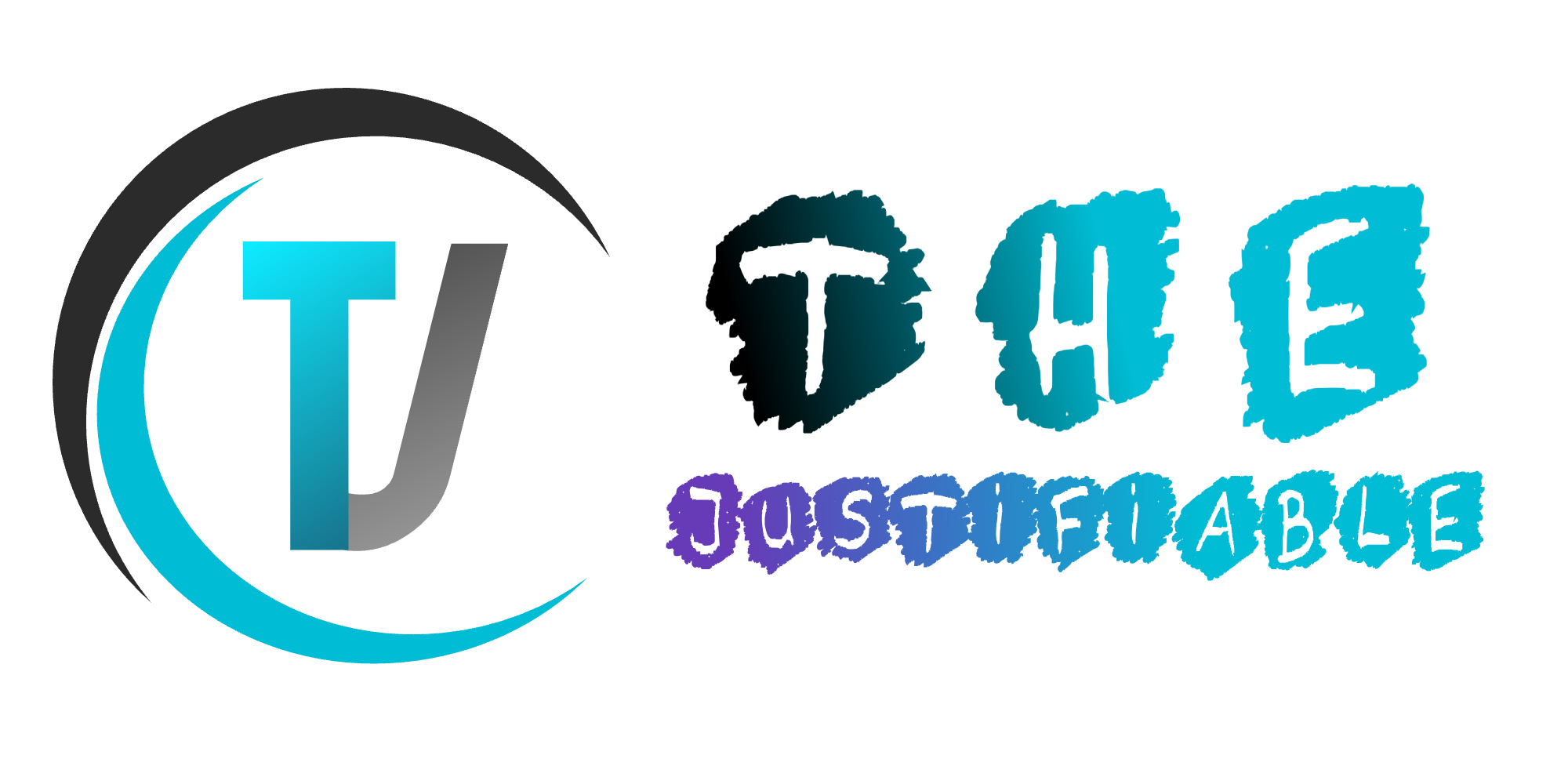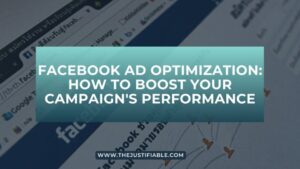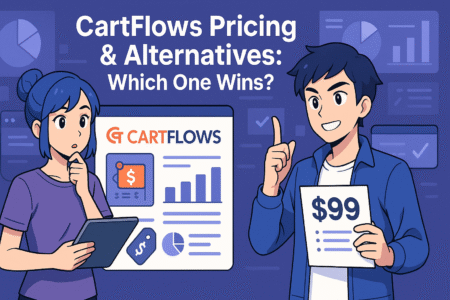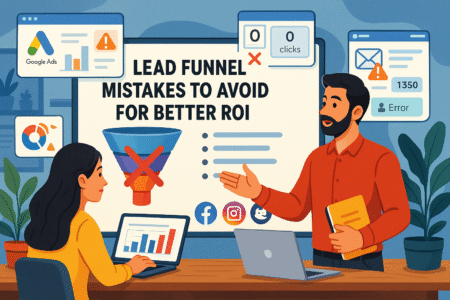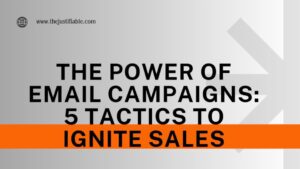Table of Contents
Marketing to businesses is a whole different game than selling to individual consumers. You’re not just convincing one person—you’re navigating committees, budgets, timelines, and layered decision-making.
So how do you get a business to actually buy from you? What makes them trust you, see your value, and choose your offer over another? And once they show interest, how do you close the deal without coming off like every other pitch-heavy vendor?
If you’ve been struggling to get traction with B2B clients—or you just want sharper, more strategic results—this guide is for you. We’re diving into the real secrets behind what makes businesses say “yes.” No fluff, no recycled tactics—just proven insights you can use right now.
Understand What Truly Drives B2B Buying Decisions
To be effective at marketing to businesses, you have to understand what’s going on behind the scenes. It’s not just about making a good pitch—it’s about knowing the real forces shaping buying decisions.
Identify Internal Stakeholders and Their Priorities
In most businesses, purchasing decisions aren’t made by just one person. There’s often a group of stakeholders involved—each with their own needs, goals, and levels of influence.
You’ll typically find roles like:
- The end user who wants ease of use.
- The budget owner looking at cost-effectiveness.
- The executive sponsor focused on ROI and alignment with strategic goals.
Instead of pitching one-size-fits-all messages, tailor your communication to each of these roles. For example, if you’re selling software to a manufacturing company, the plant manager may care about usability, while the CFO will want numbers on cost savings.
Learn How Businesses Justify ROI Before Committing
Businesses rarely make impulse purchases. They want to understand how your solution will pay off—and how soon.
They’re asking:
- Will this reduce our costs?
- Will it help us grow revenue?
- Can we achieve measurable results within a specific timeframe?
To answer those questions, speak their language. That means using percentages, cost-saving models, and timelines. A great example comes from HubSpot, which uses ROI calculators during their sales process, giving prospects projected gains in leads and revenue.
Address Risk Aversion in Corporate Buying Behavior
No one wants to be responsible for a failed purchase. Business buyers are generally risk-averse, and the more complex or costly your product, the higher the risk they perceive.
You can reduce this perceived risk by:
- Offering free trials or pilots
- Providing clear SLAs and support documentation
- Highlighting compliance and security standards
The more confidence you can build around stability, reliability, and results, the more likely they are to move forward.
Tap Into Organizational Pain Points With Precision
Generic pain points don’t work in B2B. If you say, “We help businesses save time,” you’re just blending into the noise.
Dig deeper into industry-specific issues, like:
- Inventory overstock for retail operations
- Poor onboarding for HR teams
- Slow decision cycles in procurement-heavy sectors
For example, a SaaS company targeting logistics firms might focus on reducing downtime caused by fleet mismanagement. It’s this level of detail that shows you understand their world.
Build Trust With Proof, Not Promises
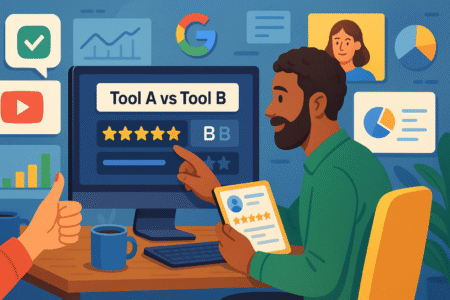
When it comes to marketing to businesses, trust is everything. You’re not just selling a product—you’re asking for a long-term relationship. And in that world, proof beats promise every time.
Use Case Studies That Mirror Your Ideal Client
A well-crafted case study can do more than a dozen sales calls. But it only works if the client featured in the case study looks like your prospect.
What makes a strong case study?
- Clear starting problem
- Actionable steps taken with your product/service
- Quantifiable improvements in business outcomes
For example, if you’re targeting mid-sized tech companies, showcase how you helped another firm of similar size, structure, and challenges. Include timelines, pain points, and measurable improvements.
Showcase ROI With Tangible Metrics and Outcomes
Saying “we helped them grow” isn’t enough. Show the actual numbers.
Examples:
- “Reduced processing time by 38% within 3 months”
- “Increased marketing-qualified leads by 70% in 60 days”
- “Cut IT costs by $45,000 annually”
Tools like Google Looker Studio or Tableau can help visualize before-and-after snapshots, which resonate strongly with data-driven decision-makers.
Position Testimonials From Decision-Makers, Not Just Users
End-users might rave about how easy your tool is to use—but decision-makers need validation from peers at their level.
A testimonial from a VP or C-suite exec carries weight. Especially when it includes language like:
- “This allowed us to reduce departmental friction.”
- “We saw a full return on investment in under 6 months.”
Always try to attribute quotes to specific names and titles to increase credibility.
Make Your Expertise Visible Through Content and Industry Awards
Thought leadership plays a subtle yet powerful role in trust-building. A prospect who’s been following your webinars or whitepapers for months is more likely to buy from you.
Here’s what helps establish that authority:
- Publishing on platforms like Forbes or TechCrunch
- Speaking at industry events or niche podcasts
- Earning recognitions like “Top SaaS Vendor of the Year”
A great example is Salesforce, which consistently publishes high-quality research reports, setting them apart not just as a service provider but as a knowledge hub.
Craft Offers That Align With How Businesses Buy
If you’re marketing to businesses, your offer needs to match how they actually make decisions. That means more than pricing—it’s about timing, structure, flexibility, and perceived risk.
Align Your Sales Cycle With Their Procurement Timeline
Businesses often follow a rigid procurement process. It’s rarely as fast as you’d like—and rushing it can break the deal.
Here’s how to make it work in your favor:
- Ask early about their internal timelines and approval processes.
- Provide documentation that aligns with their decision stages—like vendor assessments, RFP responses, or technical specs.
- Stay patient but present. Touch base just before key internal meetings.
I’ve seen B2B sales stalls that could’ve been avoided if the sales team had just asked, “When’s your next budget review meeting?” Knowing that one date often makes all the difference.
Bundle Solutions to Solve Multiple Problems at Once
Businesses love efficiency. If your product solves more than one challenge, bundle it in a way that reflects that.
Here’s what bundling can look like:
- Pairing software tools with onboarding and training services.
- Offering tiered packages for small teams, departments, or enterprise rollouts.
- Grouping complementary tools together (e.g., CRM + email automation + analytics).
For example, Asana’s enterprise plans don’t just offer more seats—they include admin controls, custom workflows, and support. That kind of bundling appeals to decision-makers managing cross-functional needs.
Offer Scalable Pricing Models That Match Business Growth
Flat-rate pricing often turns off larger clients—or scares away smaller ones. Businesses want to see that your pricing can grow with them.
Scalable pricing could include:
- Usage-based tiers (per user, per API call, per location)
- Custom pricing for large-scale implementations
- Discounted long-term contracts for multi-year commitments
Slack does this well with its per-active-user billing, which feels fair and adjusts naturally as the client scales up or down.
Include Trials, Demos, and Guarantees That Reduce Friction
If there’s any hesitation, giving someone a no-risk way to try your solution can turn interest into action.
Here are proven friction-reducers:
- Free trials with guided onboarding
- Interactive product demos (not just a video walkthrough)
- Performance guarantees—like a 90-day opt-out or service-level assurance
One B2B SaaS company I worked with increased conversion by 22% just by turning a “contact sales” button into “book live demo now.” The takeaway? Remove the guesswork and let buyers experience the value upfront.
Target Decision-Makers Using Smart Positioning
To get real traction when marketing to businesses, you need to go beyond “target audience” and speak directly to the people making decisions. That means understanding their roles, priorities, and the tools that get you in front of them.
Understand the Hierarchy: Who Influences and Who Signs
Every buying decision has two key roles: influencers and signers.
Here’s how to identify them:
- Influencers shape the decision—often department heads or key users.
- Signers control the budget and authority—think CFOs, COOs, or CEOs.
A good rule of thumb? Engage the influencer to build the case, but always equip them with what the signer needs to say yes. That usually means ROI, risk reduction, and scalability.
Speak the Language of Each Role (CFO vs. CTO vs. Ops)
Different roles value different outcomes.
Here’s a breakdown:
- CFOs want financial efficiency, ROI, and long-term savings.
- CTOs care about integration, data security, and scalability.
- Operations managers focus on usability and workflow impact.
If you’re pitching a data tool, don’t just say “it’s fast.” To a CTO, say “it cuts query times by 80% with encryption in transit.” Tailor your language to their priorities.
Personalize Messaging Based on Industry and Size
A startup CEO and an enterprise procurement team read marketing messages very differently.
To resonate with both, adjust for:
- Industry-specific terminology (compliance in healthcare vs. scale in e-commerce)
- Company size (simplicity and speed for startups, security and integrations for enterprises)
- Their stage of growth (early-stage companies might value flexibility; mature firms need structure)
Even just changing a headline from “Grow your sales pipeline” to “Streamline your partner onboarding” can shift how your message lands across industries.
Use LinkedIn and ABM Tools to Reach the Right People
LinkedIn is still the most effective B2B outreach platform when used right. Combine it with account-based marketing (ABM) tools for precision targeting.
Here’s what works:
- Use LinkedIn Sales Navigator to identify key decision-makers.
- Follow companies, engage with posts, and warm up leads before outreach.
- Use tools like Demandbase or RollWorks to track company behavior and personalize campaigns.
One marketing team saw a 31% lift in meeting bookings simply by combining account visits from RollWorks with a personalized InMail. It’s not about volume—it’s about relevance.
Use Multi-Touch Campaigns That Match the B2B Journey
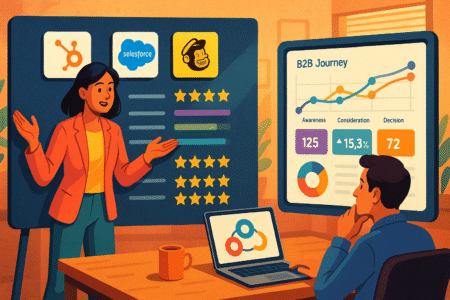
B2B buyers don’t act on a single touchpoint. It takes multiple, well-timed interactions across different channels to move them from interest to commitment.
Map the Entire Buyer Journey From Awareness to Commitment
You can’t run a one-size-fits-all campaign and expect results. B2B journeys typically unfold in stages:
- Awareness: They realize there’s a problem.
- Consideration: They explore solutions.
- Evaluation: They compare vendors.
- Decision: They commit to a choice.
Mapping this journey helps you know when to educate, when to build trust, and when to close. Tools like Funnelytics make it easy to visualize and track buyer behavior across stages.
Use Email, LinkedIn, and Retargeting Together Strategically
Each platform plays a different role in your campaign:
- Email is great for delivering value over time.
- LinkedIn builds credibility through content and outreach.
- Retargeting keeps your offer top of mind after visits or downloads.
Instead of treating them as separate efforts, use them together. For instance, someone downloads a whitepaper → gets retargeted with a customer story ad → then receives an email inviting them to a live demo.
Build Drip Campaigns That Educate Without Overwhelming
No one wants to be bombarded with daily emails. But consistent, relevant content builds trust.
A solid drip sequence might look like this:
- Welcome email with a helpful resource
- A follow-up sharing real-world results
- A deeper guide on how to apply the solution
- A success story from a similar business
- A light sales offer or demo invitation
Keep the tone conversational and helpful—not pushy. Tools like ConvertKit, ActiveCampaign, or Customer.io offer strong B2B automation options.
Layer Thought Leadership With Direct Outreach and Ads
Not everyone is ready to talk sales—and that’s okay. That’s where thought leadership fills the gap.
You can:
- Publish posts on LinkedIn with insights from your work
- Share short videos explaining a concept or framework
- Run ads promoting an executive summary or webinar
Direct outreach paired with valuable content builds trust, even with cold prospects. A prospect who just read your insights on cost-saving operations is far more likely to respond when you reach out a week later.
Position Your Brand as a Long-Term Partner, Not a Vendor
B2B buyers don’t want to make the same decision twice. They want partners who grow with them—not vendors who disappear after the deal is signed.
Emphasize Continuity, Support, and Integration
What happens after they say “yes” matters just as much as what happens before.
Make it clear that your offer includes:
- Long-term customer support
- Easy integration with existing systems
- Training and documentation for ongoing success
Salesforce does this well by positioning their customer success team as part of the package, not an upsell.
Highlight Long-Term Wins From Existing Clients
Short-term wins are good—but B2B buyers want proof of sustainable impact.
Showcase case studies or testimonials that span:
- Multiple quarters or years
- Renewals and expansion deals
- Performance benchmarks over time
One client success story showing 200% ROI over two years can outweigh a dozen quick stats. Long-term trust builds brand equity.
Avoid Buzzwords—Be Clear, Concise, and Solution-Focused
Terms like “synergy,” “game-changer,” or “revolutionize” often get tuned out. Instead, speak plainly about what you offer:
- What specific problem do you solve?
- How is the experience with your company different?
- What outcomes can they expect?
Being clear shows you respect their time—and signals confidence in your solution.
Include a Strategic Vision That Aligns With Their Growth
Most businesses are thinking years ahead. When you show how your solution fits into their bigger picture, you stand out.
Instead of just talking about features, highlight:
- Scalability over time
- Future roadmap features
- Your alignment with trends they care about (like automation or AI)
This is how you shift from “nice to have” to “essential partner.”
Optimize Your Website for B2B Buyer Intent
Your website should do more than look good—it should support the decision-making process. If your content doesn’t align with how B2B buyers think, they’ll leave before ever talking to sales.
Use Clear Navigation and Conversion Paths for Buyers
Your homepage should guide different types of visitors quickly.
Make it easy for them to:
- Find solutions based on their role or industry
- Access resources like demos or calculators
- Contact your sales team or request a quote
Avoid unnecessary animations, clutter, or vague CTAs. Clarity always wins.
Add Dedicated Pages for Industries or Use Cases
Generic messaging won’t cut it for B2B. Segment your site by:
- Industry (e.g., healthcare, manufacturing, education)
- Role (e.g., CFO, IT director, operations manager)
- Use case (e.g., automate onboarding, improve compliance)
These pages help prospects feel understood—and help your SEO efforts by targeting long-tail queries.
Make It Easy to Request Quotes, Demos, or Custom Pricing
If someone is ready to take the next step, don’t slow them down.
Use simple, visible buttons like:
- “Get a Quote”
- “Book a Demo”
- “Talk to an Expert”
And keep forms short—only ask what’s absolutely necessary. You can always collect more info after they engage.
Include Whitepapers, Specs, and Executive Summaries
B2B buyers need content they can forward internally.
Offer downloadable:
- Product specs for IT teams
- Executive one-pagers for leadership
- ROI calculators or benchmarks
Not everyone will read your site—but someone in the buying committee probably will read the PDF.
Nurture Leads With Value, Not Just Offers
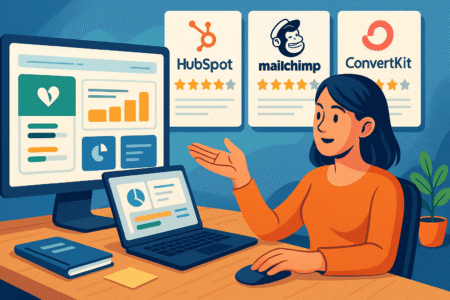
B2B buyers need time to build trust. Instead of pushing offers too soon, nurture leads with resources that guide them through their journey and position you as the right partner when they’re ready.
Segment Leads Based on Industry, Stage, and Role
Not every lead is the same. To make your nurturing effective, break your list into meaningful segments like:
- Industry (e.g., finance, healthcare, SaaS)
- Buying stage (awareness, evaluation, decision)
- Role (IT, finance, operations, marketing)
When a healthcare operations director in the evaluation stage gets content tailored to their needs—like HIPAA-compliant solution comparisons—it lands far better than a general newsletter.
Send Strategic Follow-Ups With Personalized Content
Most follow-ups fall flat because they’re too generic. The best ones reference what the lead did and guide them to what’s next.
A better approach:
- “I noticed you downloaded our automation playbook. Here’s a webinar where we go deeper.”
- “You asked about scalability—this client story might help answer that.”
Simple signals like email opens, clicks, or webpage visits can trigger highly relevant replies. It doesn’t need to feel robotic—it should feel timely.
Offer Webinars, Toolkits, and Templates for Mid-Funnel Value
Mid-funnel is where many leads stall. They’re interested but not ready.
That’s where resources like these can help:
- Webinars: Live or on-demand sessions with real client use cases
- Toolkits: Downloadable checklists or frameworks that apply to their role
- Templates: Ready-to-use docs like RFP examples or cost calculators
For instance, Drift uses chatbot strategy toolkits to nurture marketers still unsure how to implement conversational AI. That level of practical help builds momentum.
Use CRM and Lead Scoring to Time Sales Outreach
You don’t need to guess when a lead is ready—your CRM can help you know.
With lead scoring, assign points for:
- Content downloads
- Webinar attendance
- Time spent on pricing or demo pages
Once they hit a threshold, it’s time to reach out. Platforms like HubSpot, and Zoho CRM all support custom lead scoring workflows. This helps your sales team focus only on those who are showing real buying signals.
Close With Confidence Using Consultative Selling
B2B buyers want to feel heard, not sold to. When you take a consultative approach, you’re not pitching—you’re solving. That shift changes everything in your close rate.
Ask Better Questions to Uncover the Full Business Need
Instead of starting with a product demo, try leading with discovery. Ask things like:
- “What’s slowing you down right now?”
- “How do you define success with this purchase?”
- “Who else on your team needs to see value in this?”
These questions help you uncover pain points, internal politics, and measurable outcomes they care about. The more context you have, the more relevant your solution will sound.
Position Your Solution as a Strategic Advantage
Once you understand their business, shift your positioning from “product” to “impact.”
Don’t say: “We offer flexible onboarding tools.”
Say: “We cut onboarding time by 37%, helping companies scale faster with fewer hires.”
Use their language. Tie features directly to goals. Make it clear that you’re not just a tool—you’re a strategic lever.
Handle Objections With Case-Based Proof and Logic
Objections are a sign of interest—they just need assurance. Instead of pushing harder, use examples:
- “Another team in your industry had that concern. Here’s what they saw after implementation.”
- “We’ve seen this before—let me show you how it played out.”
Case studies and real quotes from clients are more persuasive than bullet points or spec sheets. They provide emotional proof to balance the logic.
Collaborate on Proposals Instead of Pitching Hard
Bring the client into the process. Ask them:
- “What would you need to see in a proposal for this to move forward?”
- “Which pieces should we tailor for the finance team or operations leader?”
Co-creating proposals makes them feel heard and gives them ownership. It also helps surface potential deal blockers before the final presentation.
Measure What Moves the Needle—Not Vanity Metrics
In B2B, it’s easy to get distracted by open rates or website visits. But those don’t tell you what’s truly driving revenue. To grow, you need to measure what matters.
Track Sales Velocity, Deal Size, and Buying Committee Behavior
Three key metrics every B2B team should track:
- Sales velocity: How long it takes from first touch to closed deal
- Average deal size: Are you growing your revenue per client?
- Buying committee behavior: Who’s engaging, and how many stakeholders are involved?
A dip in sales velocity might signal misalignment between sales and marketing. A growing deal size might validate a bundling strategy. Patterns matter.
Use Attribution to Find High-Performing Campaign Channels
Attribution helps you see what touchpoints influenced a deal.
Multi-touch attribution is ideal because most B2B deals don’t come from a single click.
Use tools like:
- Google Analytics with CRM integrations
- HubSpot’s revenue attribution
- Salesforce multi-touch attribution models
Knowing whether your whitepaper or LinkedIn post influenced more conversions helps you double down on what works.
Run Win/Loss Analysis With Feedback From Real Prospects
Nothing teaches you more than the deals you didn’t win.
Ask closed-lost leads:
- “What made you choose another vendor?”
- “Was there anything we could’ve done differently?”
Aggregate those insights quarterly. You might uncover trends like unclear pricing, too much jargon, or missing features.
Optimize Messaging Based on Performance Insights
Once you’ve gathered enough data, tweak your messaging to align with what top-performing campaigns are doing.
- If most wins come from webinars, feature them more prominently.
- If sales say the case study sealed the deal, put it earlier in the journey.
- If finance buyers hesitate, add more ROI language up front.
Your messaging should evolve just like your product. Keep testing, learning, and refining.

